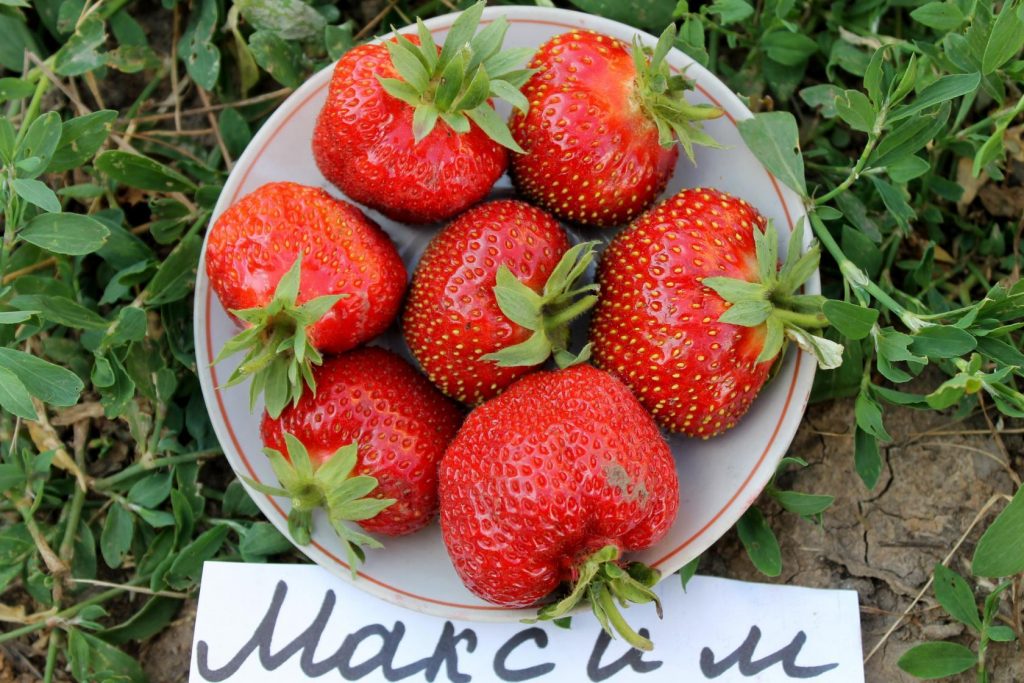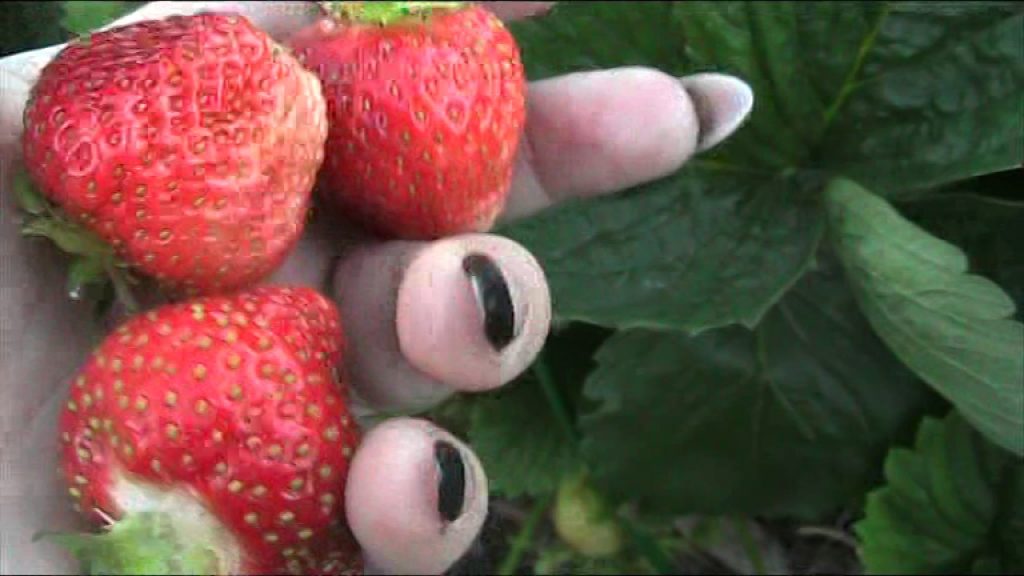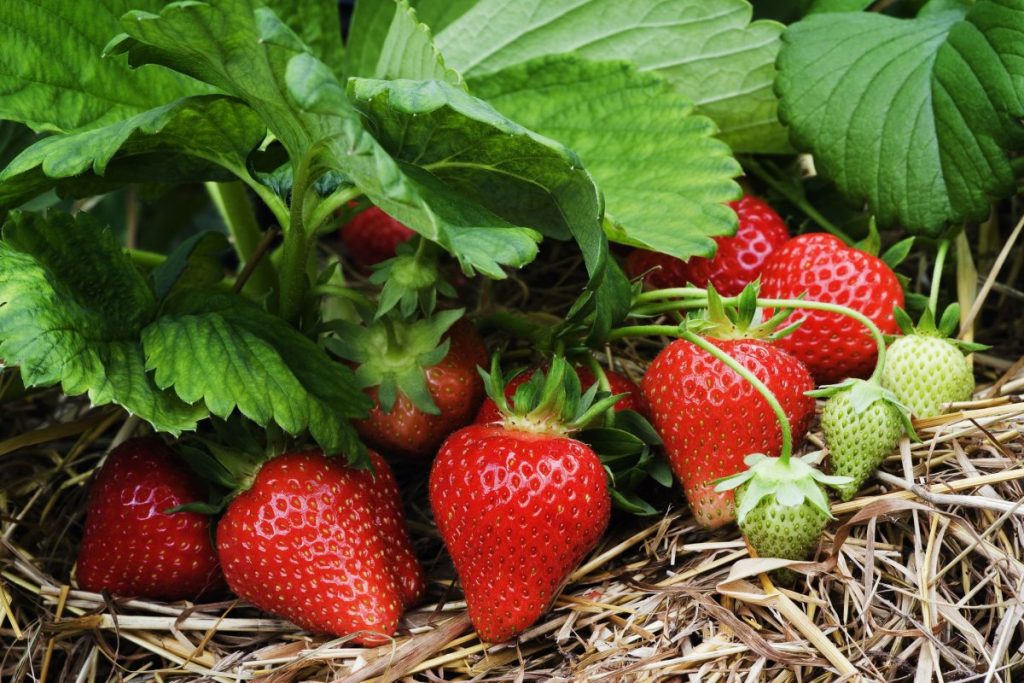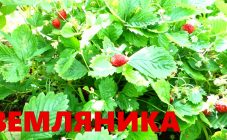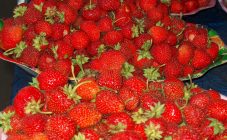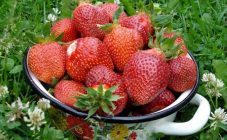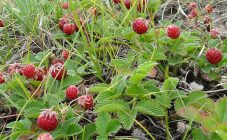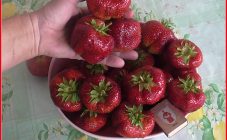Content:
Strawberries are a favorite treat for both children and adults. Delicate aroma and sweet refreshing taste cannot leave anyone indifferent. It is not surprising that such a magic berry, due to its popularity, has so many varieties - everyone will find their favorite one for themselves. Among the variety of varieties, according to both amateurs and professionals, the strawberry Maxim stands out.
This variety of large-fruited strawberries was known back in the mid-80s and became the pride of the Dutch selection. To be precise, the garden strawberry Maxim is a subspecies of the Gigantella maxi variety, adapted to the conditions of a temperate climate.
Characteristics and description of strawberry Maxim
The main feature that the Gigantella Maxim strawberry is famous for is, undoubtedly, its large size. One berry can weigh up to 120 grams. This is, indeed, an impressive figure. And other qualities of this variety are mainly positive.
Description of the variety
- Large bushes. The plant reaches 50 cm in height, its diameter is about 70 cm, strong roots, large leaves;
- Leaves are matte green, slightly corrugated;
- Large peduncles, their number on one bush can reach 30 pieces. At the same time, up to 8 ovaries develop on one inflorescence.
- The strawberry antennae are also large and develop in large numbers.
- The berries are large. The first fruits can grow up to 8 cm in diameter and up to 100-120 g in weight. Berries that ripen later are slightly smaller, but still not small.
- The color of the berries is bright red, the skin is matte, without shine. The pulp is firm, juicy, with a pleasant pineapple aftertaste.
- The shape of the berry is in most cases asymmetric and irregular.
Specifications
- Medium late grade. A rather rare occurrence among strawberry plants. But this is also his plus. The berries ripen at the end of June - during this period, most other varieties have already yielded their harvest.
- Long ripening period. Strawberries can be harvested for a whole month.
- The fruits are formed once a season.
- Very high yield. In the open field, subject to the basic principles of care, you can collect a kilogram of berries.
- Long-term fruiting pattern. In one place, this variety is able to maintain productivity up to 8 years. This is a very high figure for strawberries. But experienced gardeners recommend rejuvenation every 4 years to avoid plant depletion.
- Fairly good resistance to disease and cold.
- The ability to transport and grow on an industrial scale.
- Versatility in application. Due to the dense pulp and high taste, Maxim strawberries can be used fresh, frozen, canned, fruit drinks and juices.
Planting and care features
The technique of growing strawberries Maxim is practically no different from the standard rules for caring for this crop and is made up of several stages:
- Seedling preparation;
- Soil preparation;
- Disembarkation;
- Care.
Strawberries are grown in seedlings, you can try to sow seeds, but this is a rather painstaking process.
Planting is carried out in the fall or spring. According to gardeners, the most optimal time for planting is late August or early September. Seedlings in this case are antennae.Antennae with three leaves and a well-developed root system are considered ready for planting.
Before planting, the roots of the seedlings are recommended to be soaked in a mixture of earth, clay and water.
Strawberry is a rather demanding plant for the characteristics of the soil. She loves sunny areas, without the presence of drafts and constant winds, with light fertile soils. Clayy soils prone to blocking are categorically unsuitable, as well as soils with high acidity - in this case, adding limestone or chalk can help. In no case should you combine liming with organic fertilization.
Dig the soil, make holes according to the size of the seedling root. It is very important to maintain the correct spacing between the bushes. In the case of the Maxim variety, the gaps should be at least half a meter between plants and about 70 cm between rows. Thickening is one of the reasons for a poor-quality crop.
The antennae should be planted carefully, without damaging the roots. Tamp the soil well and water abundantly.
For some time after planting, the strawberries will hurt. During this period, it is very important to regularly water the bushes, loosen the soil. A little later, mulching is carried out - you can spread straw or sawdust between the rows.
For good growth and development of bushes in the spring, before flowering, you can introduce fertilizing with nitrogen-containing agents: ammonium nitrate, urea. This method will help the plant gain good green mass and prevent gray rot.
During flowering, it is recommended to fertilize strawberries with potassium phosphate preparations, for high-quality fruit formation. Fertilization with organic matter: manure, ash, carried out in the fall.
Watering after planting is carried out regularly, later - as needed.
The Gigantella variety is characterized by sufficient frost resistance. But at prolonged low temperatures, it is better to cover the bushes.
Another important nuance is that the antennae should be trimmed regularly. Otherwise, all the juices of the plant will go to feed the antennae, and not the berries.
Advantages and disadvantages
Definitely, the advantages of the Maxim variety significantly outweigh some of the disadvantages.
Advantages:
- Large size;
- High productivity;
- Good taste;
- Versatility in application;
- Long ripening period;
- Long periods of fruiting;
- Freight suitability.
Some disadvantages:
- Strange shape;
- Demanding to soil, weather conditions, careful care.
The Gigantella Maxim strawberry has long won the hearts of many lovers of this berry. Delicious, aromatic, juicy - it leaves no one indifferent. And although caring for this crop is quite painstaking, almost all gardeners agree: the effort is worth it.
